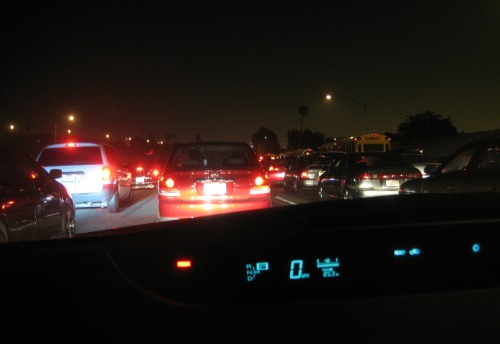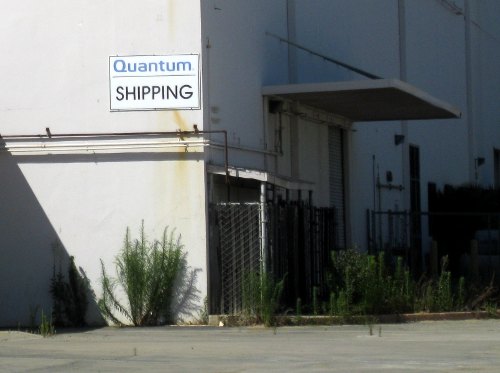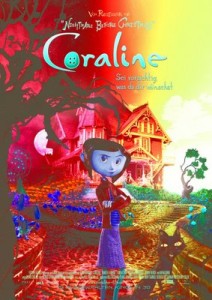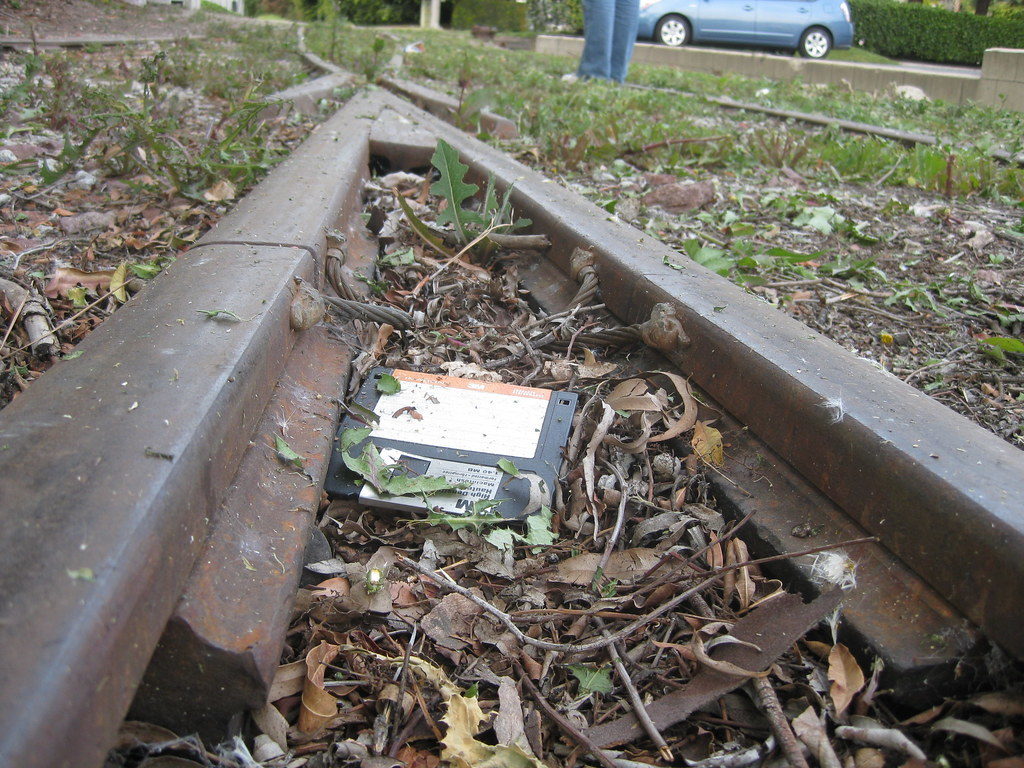
Here’s something funny that happened last weekend.
We were driving back from Los Angeles Saturday night around 11:30pm. You might think at that hour traffic would be relatively light. Not so: it was Saturday night, after all, and the route we were taking (101 south to 5 and onward) went straight through Downtown LA. By the time we merged onto the 5 we’d already been delayed by several slowdowns from accidents. It was a bit past midnight when traffic just…stopped.
We waited, figuring it was another round of stop-and-go traffic. And waited. A fire truck quietly worked its way along the right shoulder. After a few minutes, I put the parking brake on.
But the funny part was the driver of the car next to us.
He looked like he was probably around 20, and was driving an SUV with a sunroof. After a few minutes of dead stop, he opened the sun roof — this was midnight, remember — and climbed up on top of his car to see what was going on.
Then he got back down, opened the door, and walked around to the back of his truck so he could get his camera…and his guitar.
Next step: He handed the camera to his friend in the passenger seat, then walked out in the middle of the lane to pose by the car in front of him, giving a double thumbs-up sign and a goofy grin. As far as we could see, he didn’t actually end up playing the guitar.
I expect the photo is probably on Facebook or Myspace by now…somewhere.
All I’ve got are some blurry photos of the dashboard and the cars ahead.
Oh, and the traffic break? Not surprisingly, it turned out to be an accident. Once we started moving again, we passed an area where several lanes were blocked off…and a car was propped up on its side.




